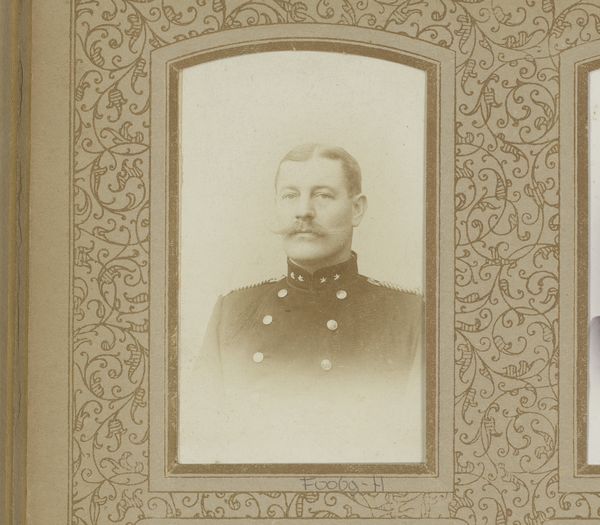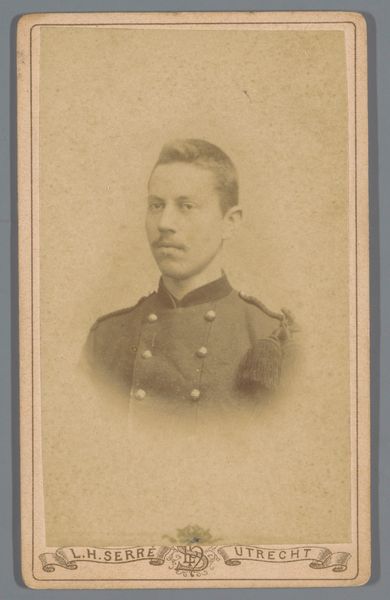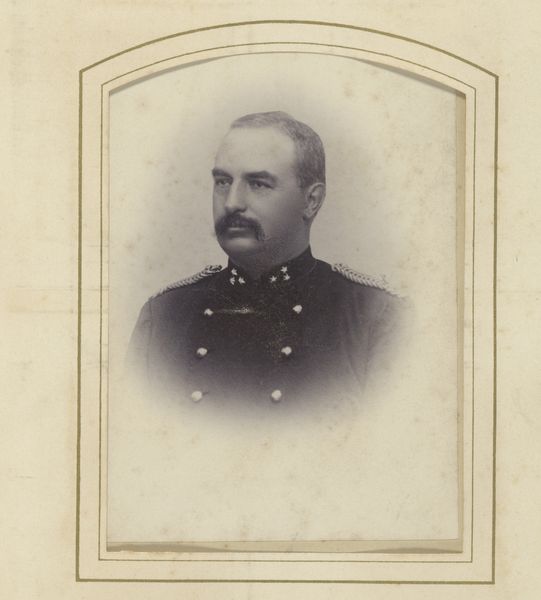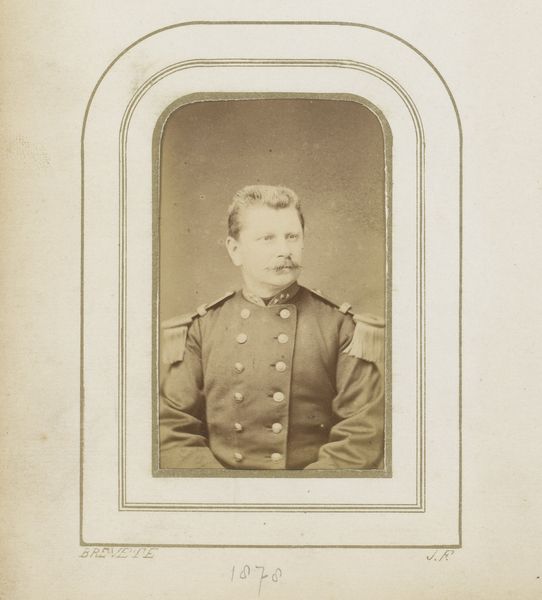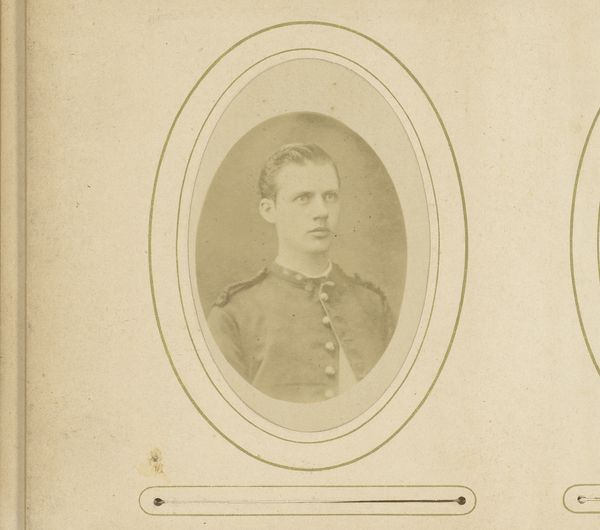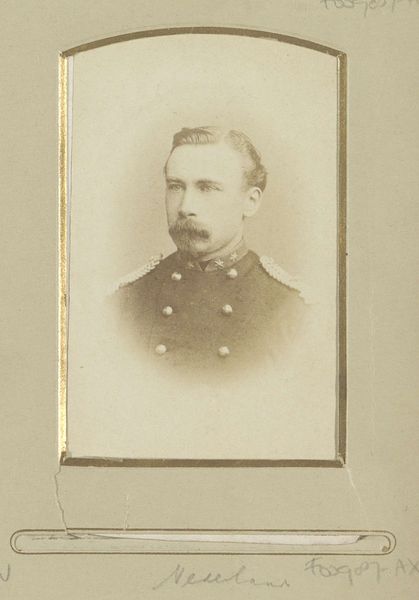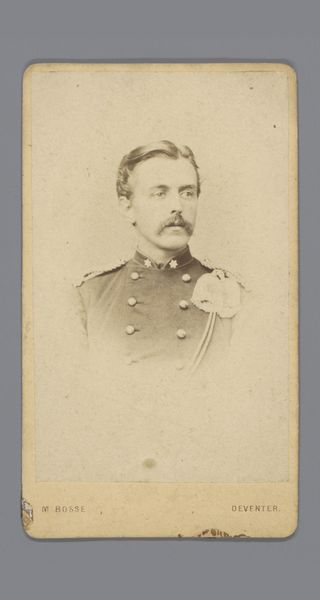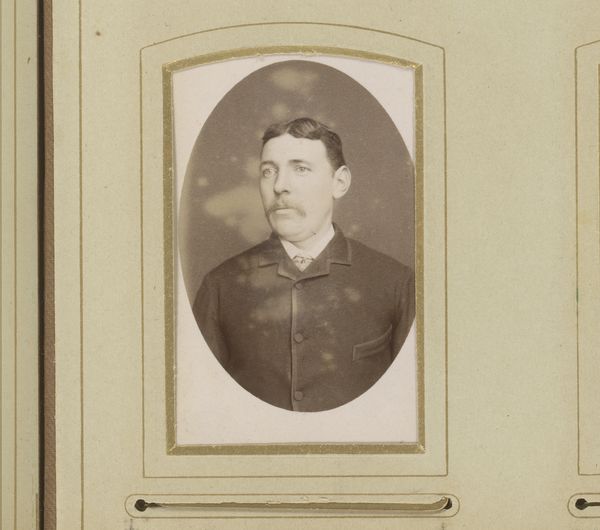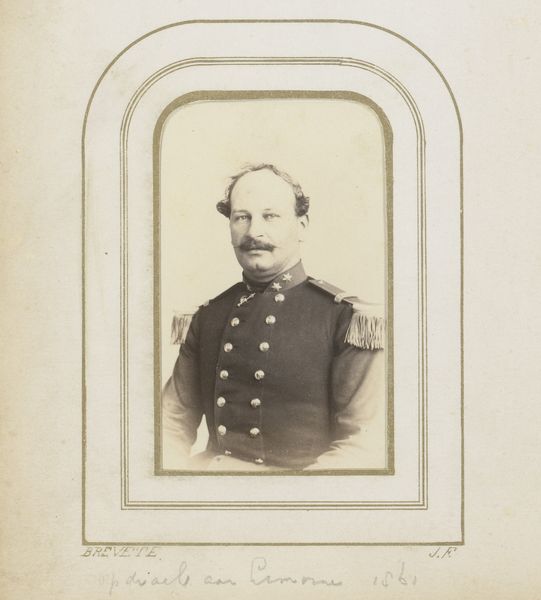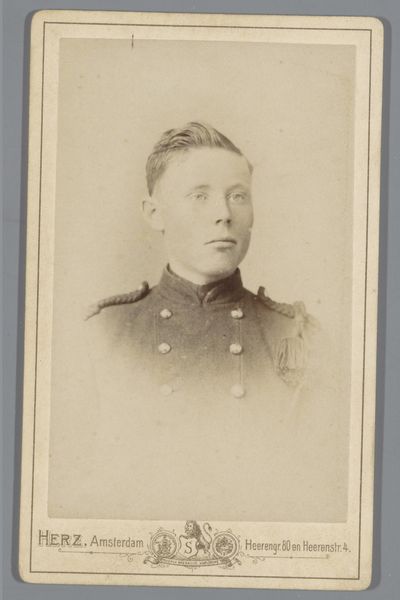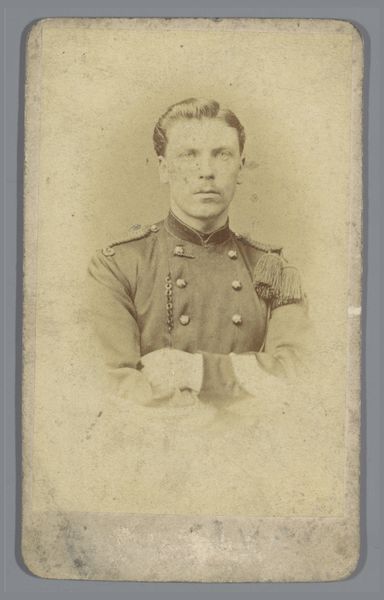
Dimensions: height 135 mm, width 95 mm
Copyright: Rijks Museum: Open Domain
Curator: This sepia photograph, titled "Portret van een man in uniform," was created between 1890 and 1898 by J.W. Wentzel. Editor: My first impression? A very somber and perhaps slightly weary looking man. The subdued palette enhances this mood, though the man has meticulously maintained mustache! Curator: I find the use of photography at this time quite intriguing, marking a significant shift in portraiture as it becomes more accessible and challenges traditional notions of artistic skill. We must remember how it transforms the modes of representation and reproduction of the image, shifting our understanding of labour and material conditions. Editor: Precisely. Though technically innovative, the composition adheres to traditional portraiture. Observe the subject's centered position, his direct gaze. Notice the balance and symmetry, how it anchors the viewer. There's also a slight diffusion, especially noticeable in the lighter areas, that contributes to an atmospheric effect. Curator: Yes, it mirrors the aesthetic choices made within traditional painting while offering an increased accuracy regarding the sitter’s likeness and his specific uniform. A uniform laden with buttons, braids, stars. Those objects carry complex signs, alluding to social hierarchy, profession, and even perhaps political leaning of the subject. This photo served a specific purpose, circulating in a context of military bureaucracy and nationalistic identity. Editor: I see. The man's uniform, from a purely visual perspective, constructs an interesting tension, simultaneously drawing attention to itself while receding into softer focus—creating this push and pull within the pictorial plane. Curator: And by doing so it highlights the very industrial process of photography itself, allowing it become the vehicle through which imperial power gets to express its grandure and claim some kind of a fabricated truth. We must remember it sits within complex web of material production, technological development and social display, reflecting broader industrial landscape. Editor: Ultimately, this portrait uses visual elements to transcend beyond documentation. By softening, obscuring detail it enters the realm of suggestion evoking a contemplative mood of dignity and quiet resignation, wouldn’t you say? Curator: Maybe. It is certainly more interesting to ask: how photography’s mechanisation impacts not just the image itself, but the societal functions and artistic possibilities within the context of turn of the century society? Editor: A valid point and worthy of deeper reflection, thank you.
Comments
No comments
Be the first to comment and join the conversation on the ultimate creative platform.
